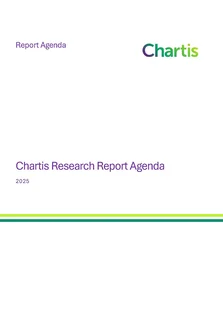<p>The objective of managing a bank’s balance sheet is to optimize reward versus risk. This requires:</p>
<ul>
<li>An assessment and statement of the bank’s appetite for risk leading to the establishment of Key Risk Indicators (KRIs) within a Risk Appetite framework.</li>
<li>A determination by the Bank’s Board of a target range for measures of success – such as Return on Assets, Return on Equity, Return on Risk Adjusted Risk Assets etc., referred to as Key Performance Indicators (KPIs) that will be judged acceptable by the stakeholders.</li>
</ul>
<p>Managing the success of this optimization is achieved by the development of complementary longterm strategic and short-term operating plans; and monitoring the actual outcome of KRIs and KPIs against the forecast.<br />
However, this optimization process is complex for several reasons:</p>
<ul>
<li>The strategy will optimize KPIs constrained by KRIs (risk appetite targets) and will be run under a ‘business as usual’ scenario, but</li>
<li>The management will have to take into consideration also the capability of the bank to manage KRIs (risk capacity and risk tolerance) under stressed scenarios, to meet regulatory constraints.</li>
</ul>
<p>This paper covers the ‘business as usual’ and ‘stressed environment’ management of a bank. However, it will not look at the actions that management takes during a recovery period or the challenges faced by the regulator to resolve a failed bank.<br />
The purpose of this paper is to explain how a bank can manage its business to remain in an optimal state of ‘business as usual’ taking into account the needs of all businesses and support functions to ensure that:</p>
<ul>
<li>The level of shareholder equity, liquidity, funding and leverage remain prudentially compliant, and</li>
<li>Internal management buffers, in excess of the prudential requirement, allow sufficient but not excessive or inefficient utilization of shareholder equity, liquidity, funding and leverage.</li>
</ul>
<p>We will refer to this complex process as Optimal Balance Sheet Management (OBSM) of assets, liabilities and shareholder equity. OBSM requires:</p>
<ul>
<li>Thorough comprehension of the prudential regulatory framework.</li>
<li>A holistic approach that recognizes the entire scope of Balance Sheet Management (BSM).</li>
<li>Recognition of the challenges arising from competing objectives of regulators and bank management.</li>
<li>Effective governance, organizational structure and planning function embracing longerterm strategic and shorter-term operating plans.</li>
<li>Establishment of the methodology.</li>
<li>Implementation of technology needed to support the process.</li>
</ul>
<p>In particular, the paper will:</p>
<ul>
<li>Explain that BSM is a collective responsibility of all businesses and the primary support functions.</li>
<li>Advocate that a revitalized Asset & Liability Management Committee (ALMC) is the appropriate forum to manage the process and achieve the objective.</li>
<li>Explain why a tool (simulation engine) capable of managing stochastic scenarios and the evolution of the balance sheet, P&L, and capital and financial resources of a bank is crucial in defining the actions needed to optimize the BSM process.</li>
</ul>
<p>This report will look at technology to enable OBSM, with a focus on Prometeia’s methodology and technology. It also details general reverse stress testing methodology for banking and makes comparisons with DFA models used in insurance. Chartis regards Prometeia as one of the leading vendors in the balance sheet management market.</p>
Only users who have a paid subscription or are part of a corporate subscription are able to print or copy content.
To access these options, along with all other subscription benefits, please contact info@risk.net or view our subscription options here: http://subscriptions.risk.net/subscribe
You are currently unable to print this content. Please contact info@chartis-research.com to find out more.
You are currently unable to copy this content. Please contact info@chartis-research.com to find out more.
Copyright Infopro Digital Limited. All rights reserved.
As outlined in our terms and conditions, https://www.infopro-digital.com/terms-and-conditions/subscriptions/ (point 2.4), printing is limited to a single copy.
If you would like to purchase additional rights please email info@chartis-research.com
Copyright Infopro Digital Limited. All rights reserved.
You may share this content using our article tools. As outlined in our terms and conditions, https://www.infopro-digital.com/terms-and-conditions/subscriptions/ (clause 2.4), an Authorised User may only make one copy of the materials for their own personal use. You must also comply with the restrictions in clause 2.5.
If you would like to purchase additional rights please email info@chartis-research.com


